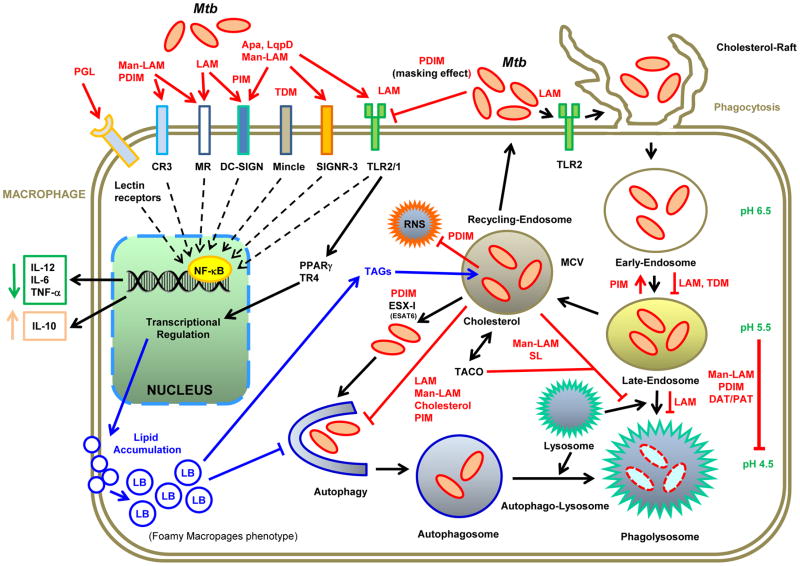Figure 2.
Role of the host-mycobacterial lipids interactions during macrophages infection.
The cell envelope of mycobacteria comprise a wealth of unique glyco-lipids that act as PAMPs and are recognized by macrophages and DCs through PRRs such as Toll-like receptors (TLRs), Nod-like receptors (NLRs), and CLRs. In this scheme, we highlight the main host-mycobacterial lipid interactions and their consequences. Mtb lipids prevent the phagosome maturation, acidification and fusion with lysosomes; they also inhibit autophagy, in order to create a permissive niche that allows bacteria to resist degradation, and eventually replicate within the macrophage. During infection, macrophages accumulate lipids that can be used for Mtb as carbon and energy sources. Apa and LpqH: surface glyco- and lipoproteins, TACO/coronin 1: actin-binding host protein, Mincle: macrophage-inducible C-type lectin, RNS: reactive nitrogen species, MR: C-type lectins Mannose Receptor, DC-SIGN: dendritic cell-specific ICAM-grabbing non-integrin (only in DCs), CR3: complement receptor type 3, SIGNR3: DC-SIGN homologue in mice.

